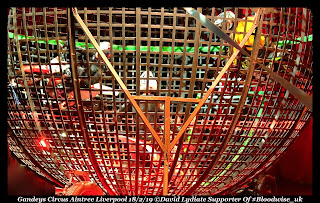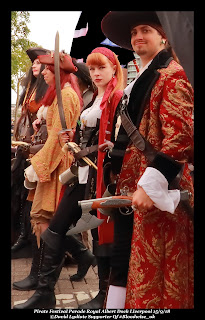Terracotta Warriors 8/8/2018
World Museum, William Brown St, Liverpool
Using My Photography To Raise Awareness For The Charity Bloodwise #Bloodwise_uk
Introduction
The Terracotta Army is a collection of
terracotta sculptures depicting the
armies of Qin Shi Huang, the first Emperor of China.
It is a form of funerary art buried with the
emperor in 210–209 BCE with the purpose of protecting the emperor in his
afterlife.
The figures, dating from approximately the
late third century BCE,[1] were
discovered in 1974 by local farmers in Lintong County, outside Xi'an, Shaanxi,
China. The figures vary in height according to their roles, with the tallest
being the generals. The figures include warriors, chariots
and horses. Estimates from 2007 were that the three pits containing the
Terracotta Army held more than 8,000 soldiers, 130 chariots with 520 horses,
and 150 cavalry horses, the majority of which remained buried in the pits near Qin Shi
Huang's mausoleum.[2] Other
terracotta non-military figures were found in other pits, including officials,
acrobats, strongmen,
and musicians.
Photographic Restrictions
No flash photography was allowed at the
exhibition, which I understood and respected.
The lighting was very atmospheric but of a
very low-key nature.
Given the restriction regarding flash I had
to make compromises, therefore I had to select a highly sensitive Iso rating,
that would react to the low-key lighting sufficiently (iso 3200, normal iso is
between 100-400) and use a wide aperture to let as much light in as possible.
By having to compromise, my images were not as sharp as I would have liked, and
had increased noise (grain, appeared to have a rough texture and lack the
quality that I normally produce), noise reduction was used when processing, but images can show lack of
sharpness if taking this process to the extreme. Obviously I could not set up a
tripod, due to the crowds. I used a small Canon compact, which proved very
useful in tight corners. I enjoyed the exhibition and the challenge of working
under these conditions.
Chinese Culture In Liverpool
Following on with the theme of Chinese Culture the photographs below depict the Chinese Arch in Berry St Liverpool, as part of Liverpool's China Town And a Pagoda taken in Festival Gardens.
Bloodwise
The exhibition in World Museum, William Brown
St Liverpool was an ideal photographic opportunity to raise awareness for The
Charity Bloodwise, formerly known as Leukaemia And Lymphoma Research. The
exhibition was very popular.
Photographs taken By And Copyright Holder ©David Lydiate
I use this photograph to raise awareness for #Bloodwise_uk ONLY
Should any mass media, retail outlet or street trader
want to publish or sell this image please contact liverfocus@gmail.com and can
people please print the hash tag #Bloodwise_uk if sharing, thank you for the
interest in my work.
Bloodwise Contacts
https://bloodwise.org.uk
@Bloodwise_uk

















































